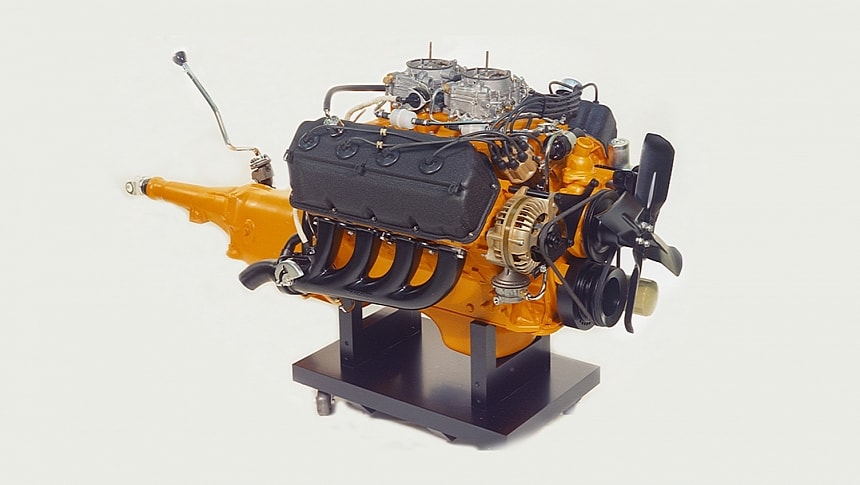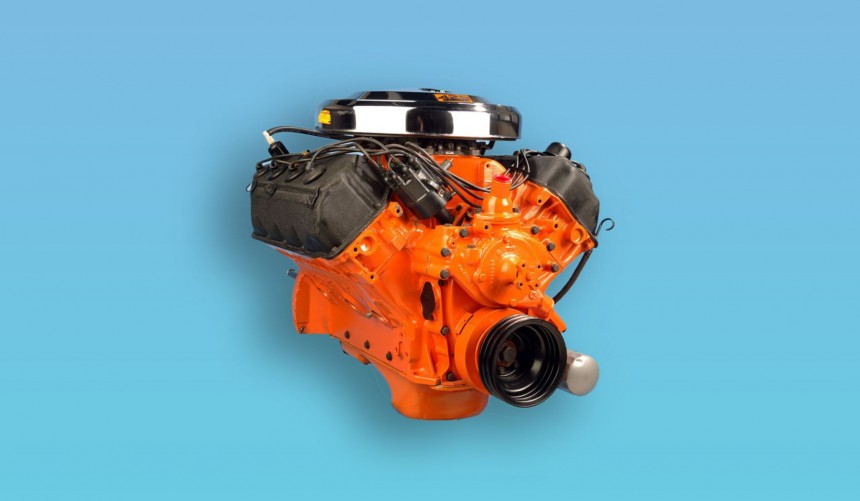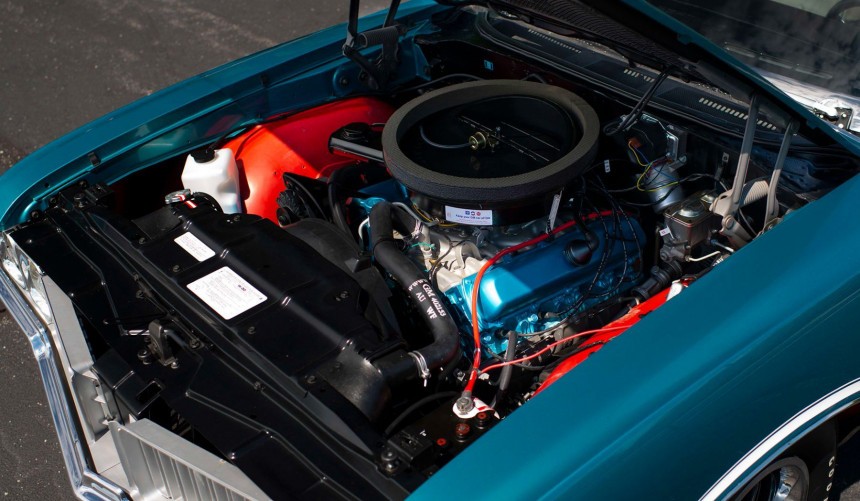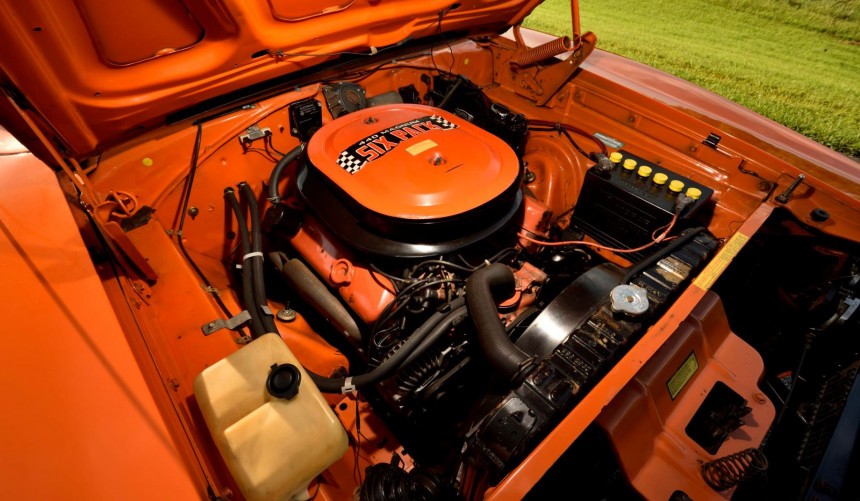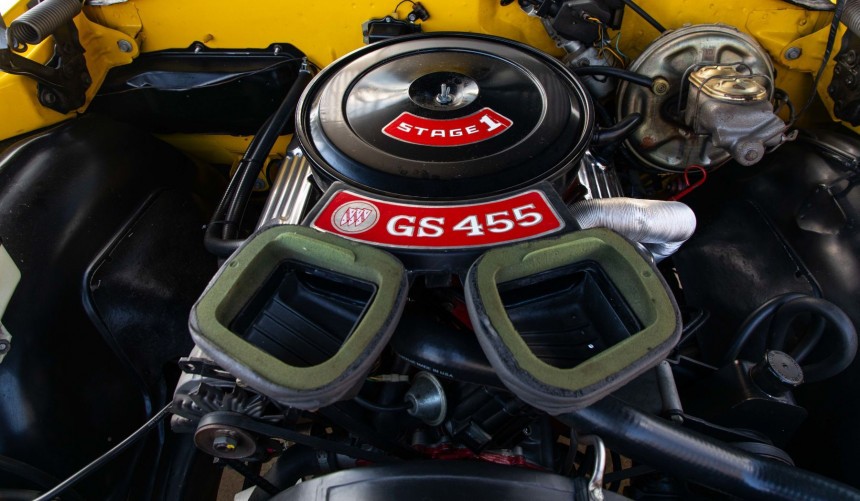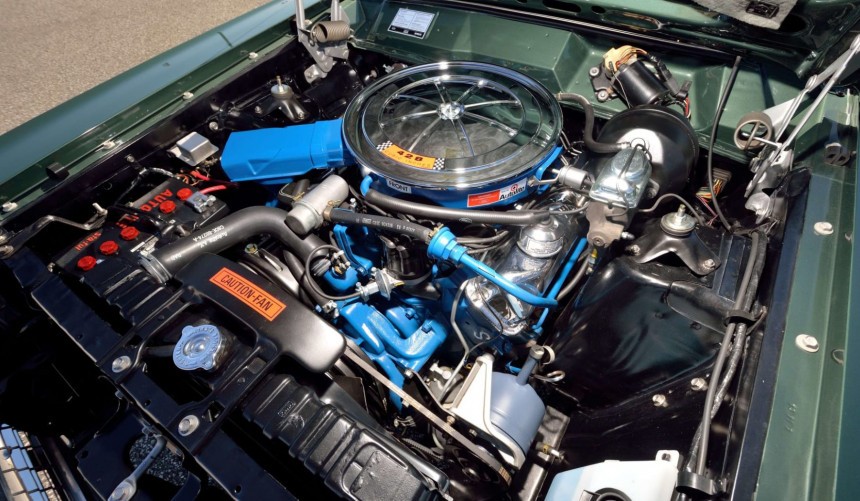A well-known fact today is that most muscle car V8s from the 1960s and early 1970s were purposefully underrated, so let's take a look at the most iconic powerhouses of the era and their true horsepower ratings.
From the mid-1960s to 1970, when the foerce horsepower war reached its peak, American carmakers developed ever-more-powerful V8s for their popular high-performance models.
During that period, and decades after the curtain dropped on outrageous muscle cars, a huge number of enthusiasts argued that the advertised horsepower figures were purposefully underrated to keep insurance premiums at bay and/or qualify for certain NHRA stock drag racing classes.
Many have researched this claim and ended up proving its validity. Probably the most famous person to research this subject was writer and automotive historian Roger Huntington, who developed an accurate algorithm that revealed surprising horsepower figures for the muscle car era's most famous V8 engines.
But before we dive into Huntington's findings, it's important to remember that, back then, output ratings were measured using the SAE gross standard, meaning that the powerplants were dyno tested on an engine bank without accessories and set up to perfection.
This method proved inaccurate compared to real-world conditions, which is why the US automotive industry switched to the more accurate NET standard in the early 1970s.
So, while we know for certain that the advertised horsepower figures of these mighty V8s were indeed underrated, mainly for NHRA homologation purposes, the true figures in this article are still SAE-gross. Therefore, they can't be directly compared to post-1972 outputs.
After using a series of engines with hemispherical combustion chambers in their production vehicles during the 1950s, the Chrysler Corporation developed a new HEMI engine in 1964.
A thoroughbred race engine with a displacement of 426 cubic inches (7.0 liters), the new HEMI was developed for NASCAR dominance.
However, NASCAR banned the engine in 1965, as it wasn't available in any of the corporation's mass-produced cars.
The decision forced Mopar engineers to devise a street version, and in 1966, the muscle car era's most iconic engine was unleashed on public roads.
Available until the end of the 1971 model year in multiple high-performance models from Dodge and Plymouth, the street HEMI was rated at 425 hp at 5,000 rpm and 490 lb-ft (664 Nm) of torque at 4,000 rpm.
However, according to Huntington's algorithm, the Elephant motor made 470 hp at 6,000 rpm, a figure that was also backed up by many other independent dyno tests.
For the 1970 model year, GM lifted its self-imposed 400-ci (6.5-liter) ban on intermediate-bound V8s, so its divisions were free to develop humongous and insanely powerful motors.
Oldsmobile, who had dodged the ban in 1968 and 1969 by partnering up with Hurst Performance and having them install 445-ci (7.5-liter) Rockets into the 4-4-2-based Hurst/Olds, now made the 445 standard in the updated 1970 4-4-2.
Equipped with the W-30 package, which added revised cylinder heads, a more aggressive camshaft, a low-restriction air cleaner, and an improved four-barrel carb that sat atop a modified aluminum intake manifold, the 455 was rated at 370 hp at 5,300 rpm and 500 lb-ft (680 Nm) of torque at 3,600 rpm.
While the advertised figures were impressive, the W-30 455 made 440 hp at 5,600 rpm, according to Huntington's algorithm.
Although the 426 HEMI was the most powerful, iconic, and desirable V8 that could be fitted in the engine bay of the muscle car era's most popular Dodges and Plymouths, it wasn't Mopar's only high-performance big block offering.
Introduced in 1969, the highest-output version of the 440-ci (7.2-liter) RB engine featured a new intake setup with a trio of two-barrel Holley carbs.
Dubbed 440 Six Pack in Dodges and 440 Six Barrel in Plymouths, it became the go-to choice for performance enthusiasts who wanted big-block power for less money than a HEMI.
Available until the end of the 1971 model year, this popular version of the 440 was advertised with an output of 390 hp at 4,700 rpm (385 hp in 1971) and 490 lb-ft (664 Nm) of torque at 3,200 rpm.
However, according to independent tests and Huntington's algorithm, the humongous V8 made 430 hp at 5,600 rpm.
With the 400-ci (6.5-liter) ban lifted, Buick joined Pontiac and Oldsmobile in the 455-ci (7.5-liter) big-block V8 club.
Available on the division's mightiest high-performance intermediates, the Skylark-based GS (Gran Sport) and the GSX, the engine shared the same displacement with Pontiac and Oldsmobile's range-topping engines, but it was entirely developed by Buick engineers on the backbones of the 1967-1969 400.
In its most lethal guise, the 455 was equipped with the Stage 1, a performance package that added a series of upgrades, including larger valves, a hotter cam, and a four-barrel Rochester Quadrajet carburetor.
With this setup, the engine was advertised with an output of 360 hp at 4,600 rpm and 510 lb-ft (691 Nm) of twist at 2,800 rpm. The torque figure was actually a record for an American-built production car, which stood in place until the introduction of the Dodge Viper.
While the torque rating was unmatched and pretty accurate, the engine actually made 420 hp at 5,400 rpm.
During the 1960s, FoMoCo's Total Performance strategy yielded NASCAR championships, consecutive Le Mans wins, and drag strip dominance.
At the heart of it all was the mighty 427 FE, particularly its side-oiler version. However, by the middle of 1968, the venerable engine rode into the sunset, passing the performance torch to the 428 Cobra Jet (which was actually a 427).
More "streetable" than its predecessor, the Cobra Jet became available in most of the high-performance Ford and Mercury models, like the Torino GT, Cyclone GT, Mustang Mach 1 (and GT), or Cougar 7.0 Litre and Eliminator, powering them until the end of the 1969 model year.
Though short-lived, the Cobra Jet was a legendary performance V8 that earned universal praise during its heyday. When ordered with the Drag Pak option, the CJ became the Super Cobra Jet, which meant it received a strengthened crankshaft and 427 Le Mans-spec connecting rods with capscrews instead of bolts.
Whether delivered in a "plain" Cobra Jet or a Super Cobra Jet specifications, the engine had the same factory output rating: 335 hp at 5,200 rpm and 440 lb-ft (597 Nm) of torque at 3,400 rpm.
Owners and enthusiasts were quick to dismiss the horsepower rating, as their car proved more powerful, and according to Huntington's algorithm that yielded 410 hp at 5,600 rpm, they were right.
During that period, and decades after the curtain dropped on outrageous muscle cars, a huge number of enthusiasts argued that the advertised horsepower figures were purposefully underrated to keep insurance premiums at bay and/or qualify for certain NHRA stock drag racing classes.
Many have researched this claim and ended up proving its validity. Probably the most famous person to research this subject was writer and automotive historian Roger Huntington, who developed an accurate algorithm that revealed surprising horsepower figures for the muscle car era's most famous V8 engines.
But before we dive into Huntington's findings, it's important to remember that, back then, output ratings were measured using the SAE gross standard, meaning that the powerplants were dyno tested on an engine bank without accessories and set up to perfection.
This method proved inaccurate compared to real-world conditions, which is why the US automotive industry switched to the more accurate NET standard in the early 1970s.
So, while we know for certain that the advertised horsepower figures of these mighty V8s were indeed underrated, mainly for NHRA homologation purposes, the true figures in this article are still SAE-gross. Therefore, they can't be directly compared to post-1972 outputs.
Mopar 426 HEMI
A thoroughbred race engine with a displacement of 426 cubic inches (7.0 liters), the new HEMI was developed for NASCAR dominance.
However, NASCAR banned the engine in 1965, as it wasn't available in any of the corporation's mass-produced cars.
The decision forced Mopar engineers to devise a street version, and in 1966, the muscle car era's most iconic engine was unleashed on public roads.
Available until the end of the 1971 model year in multiple high-performance models from Dodge and Plymouth, the street HEMI was rated at 425 hp at 5,000 rpm and 490 lb-ft (664 Nm) of torque at 4,000 rpm.
However, according to Huntington's algorithm, the Elephant motor made 470 hp at 6,000 rpm, a figure that was also backed up by many other independent dyno tests.
Oldsmobile 455 W-30
Oldsmobile, who had dodged the ban in 1968 and 1969 by partnering up with Hurst Performance and having them install 445-ci (7.5-liter) Rockets into the 4-4-2-based Hurst/Olds, now made the 445 standard in the updated 1970 4-4-2.
Equipped with the W-30 package, which added revised cylinder heads, a more aggressive camshaft, a low-restriction air cleaner, and an improved four-barrel carb that sat atop a modified aluminum intake manifold, the 455 was rated at 370 hp at 5,300 rpm and 500 lb-ft (680 Nm) of torque at 3,600 rpm.
While the advertised figures were impressive, the W-30 455 made 440 hp at 5,600 rpm, according to Huntington's algorithm.
Mopar 440 Six Pack (440 Six Barrel)
Introduced in 1969, the highest-output version of the 440-ci (7.2-liter) RB engine featured a new intake setup with a trio of two-barrel Holley carbs.
Dubbed 440 Six Pack in Dodges and 440 Six Barrel in Plymouths, it became the go-to choice for performance enthusiasts who wanted big-block power for less money than a HEMI.
Available until the end of the 1971 model year, this popular version of the 440 was advertised with an output of 390 hp at 4,700 rpm (385 hp in 1971) and 490 lb-ft (664 Nm) of torque at 3,200 rpm.
However, according to independent tests and Huntington's algorithm, the humongous V8 made 430 hp at 5,600 rpm.
Buick 455 Stage 1
Available on the division's mightiest high-performance intermediates, the Skylark-based GS (Gran Sport) and the GSX, the engine shared the same displacement with Pontiac and Oldsmobile's range-topping engines, but it was entirely developed by Buick engineers on the backbones of the 1967-1969 400.
In its most lethal guise, the 455 was equipped with the Stage 1, a performance package that added a series of upgrades, including larger valves, a hotter cam, and a four-barrel Rochester Quadrajet carburetor.
With this setup, the engine was advertised with an output of 360 hp at 4,600 rpm and 510 lb-ft (691 Nm) of twist at 2,800 rpm. The torque figure was actually a record for an American-built production car, which stood in place until the introduction of the Dodge Viper.
While the torque rating was unmatched and pretty accurate, the engine actually made 420 hp at 5,400 rpm.
FoMoCo 428 Cobra-Jet/Super Cobra Jet
At the heart of it all was the mighty 427 FE, particularly its side-oiler version. However, by the middle of 1968, the venerable engine rode into the sunset, passing the performance torch to the 428 Cobra Jet (which was actually a 427).
More "streetable" than its predecessor, the Cobra Jet became available in most of the high-performance Ford and Mercury models, like the Torino GT, Cyclone GT, Mustang Mach 1 (and GT), or Cougar 7.0 Litre and Eliminator, powering them until the end of the 1969 model year.
Though short-lived, the Cobra Jet was a legendary performance V8 that earned universal praise during its heyday. When ordered with the Drag Pak option, the CJ became the Super Cobra Jet, which meant it received a strengthened crankshaft and 427 Le Mans-spec connecting rods with capscrews instead of bolts.
Whether delivered in a "plain" Cobra Jet or a Super Cobra Jet specifications, the engine had the same factory output rating: 335 hp at 5,200 rpm and 440 lb-ft (597 Nm) of torque at 3,400 rpm.
Owners and enthusiasts were quick to dismiss the horsepower rating, as their car proved more powerful, and according to Huntington's algorithm that yielded 410 hp at 5,600 rpm, they were right.
